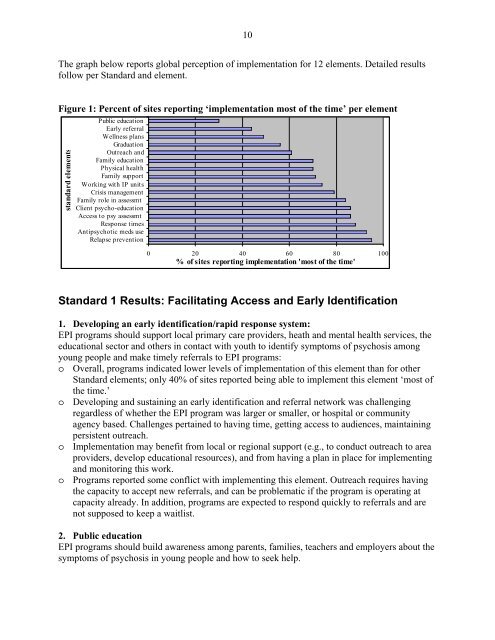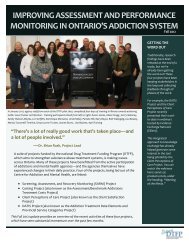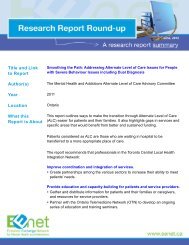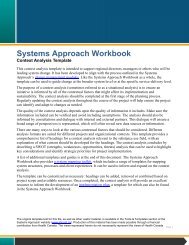Implementation of Early Psychosis Intervention Program ... - EENet
Implementation of Early Psychosis Intervention Program ... - EENet
Implementation of Early Psychosis Intervention Program ... - EENet
You also want an ePaper? Increase the reach of your titles
YUMPU automatically turns print PDFs into web optimized ePapers that Google loves.
10The graph below reports global perception <strong>of</strong> implementation for 12 elements. Detailed resultsfollow per Standard and element.Figure 1: Percent <strong>of</strong> sites reporting ‘implementation most <strong>of</strong> the time’ per elementstandard elementsPublic education<strong>Early</strong> referralWellness plansGraduat ionOutreach andFamily educationPhysical healthFamily supportWorking with IP unitsCrisis managementFamily role in assessmtClient psycho-educationAccess to psy assessmtResponse timesAntipsychotic meds useRelapse prevention0 20 40 60 80 100% <strong>of</strong> sites reporting implementation 'most <strong>of</strong> the time'Standard 1 Results: Facilitating Access and <strong>Early</strong> Identification1. Developing an early identification/rapid response system:EPI programs should support local primary care providers, heath and mental health services, theeducational sector and others in contact with youth to identify symptoms <strong>of</strong> psychosis amongyoung people and make timely referrals to EPI programs:o Overall, programs indicated lower levels <strong>of</strong> implementation <strong>of</strong> this element than for otherStandard elements; only 40% <strong>of</strong> sites reported being able to implement this element ‘most <strong>of</strong>the time.’o Developing and sustaining an early identification and referral network was challengingregardless <strong>of</strong> whether the EPI program was larger or smaller, or hospital or communityagency based. Challenges pertained to having time, getting access to audiences, maintainingpersistent outreach.o <strong>Implementation</strong> may benefit from local or regional support (e.g., to conduct outreach to areaproviders, develop educational resources), and from having a plan in place for implementingand monitoring this work.o <strong>Program</strong>s reported some conflict with implementing this element. Outreach requires havingthe capacity to accept new referrals, and can be problematic if the program is operating atcapacity already. In addition, programs are expected to respond quickly to referrals and arenot supposed to keep a waitlist.2. Public educationEPI programs should build awareness among parents, families, teachers and employers about thesymptoms <strong>of</strong> psychosis in young people and how to seek help.
















